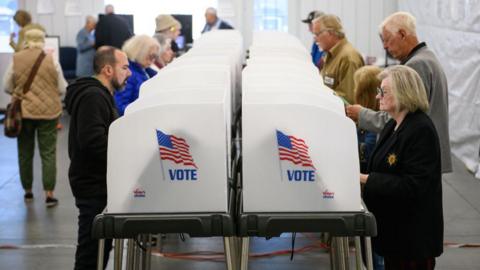For much of the 2024 US presidential campaign, polls and pundits rated the race too close to call.
Then Donald Trump delivered a commanding victory over Kamala Harris, winning at least five battleground states, and performing unexpectedly well in other places.
He is now poised to become the first Republican in two decades to win the popular vote, and could enter office with a Republican-controlled House and Senate at his back.
So were the polls wrong about it being a tight contest?
At the national level, they certainly appeared to underestimate Trump for the third election in a row.
But in the battleground states such as Pennsylvania, where most of the polling was focused, Trump's margin of victory was typically within striking distance of his performance in the polls, even if the forecasts were slightly lower than the final outcome.
The average polling error seen in these swing states was not actually that big. Still, in tight campaigns, small changes can make a big difference.
